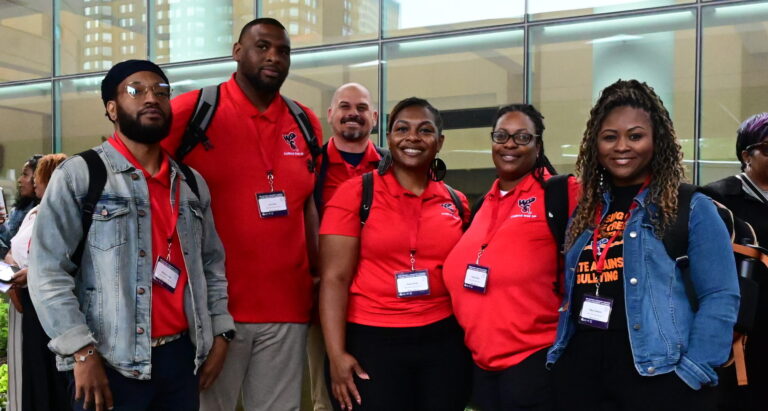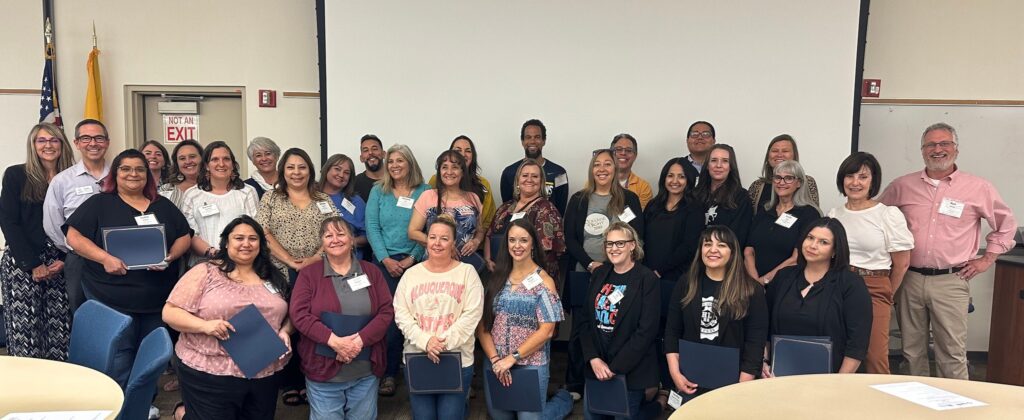
IEL supports leaders at the school and district level as they facilitate change and transformation in their school and community, offering multiple formats for professional learning. Our Micro–credentials offer deep experiences for leaders over longer periods of time (10 weeks to a full semester).
These job-embedded experiences come with support from peers and coaches to act as guides and mentors. With this support, leaders apply new knowledge, skills, processes, and mindsets at their school and district. These early applications are small probes and provide a model for expansion across the school and district.
Interested? Let us know here
Next Micro-Credential course begins September 2025!
Offerings
- Micro-credentials (each course is a minimum of 8 weeks): Participants in a MC have the following support: coach, cohort of peers, and tools that directly support the work, and can be used for many years. The following Micro–credentials are available:
- Developing a Collaborative Assets and Needs Assessment
- Consensus Building and Decision-making
- Developing a Culture of Care, Safety, and Inclusion
- Workshops and Institutes: These professional development sessions are designed to increase the knowledge, skills, dispositions, and perspectives of participants. They are often a starting point for deeper work and are open to multiple people from a particular site. Content focuses include:
- Developing a culture of care, safety, and inclusion
- Strategies for building a leadership collaborative team
- Building a climate of belonging, care, and safety
- Collaborative practices for decision-making
- Building relational trust among leadership teams
- Facilitating effective meetings
- Leading for community-connected curriculum
- Community Learning Exchanges (CLEs): A Community Learning Exchanges is a gathering that seek to bring members of a community together to build relationships, design innovative responses to community issues, and better understand the assets of a community. We work with communities to identify topics and facilitate protocols that enhance deep and meaningful dialogue and collaboration. In a Community Learning Exchange, we recognize that the expertise is among the participants in the room.
- Customized support. We work with schools, districts, and community organizations to customize our offerings to meet the local needs and capacity building efforts. For more information contact Ken Simon, simonk@iel.org; 303-842-6008
What past participants say about their experience:
- “I am better at leveraging collective intelligence, increasing engagement and ownership, enhancing problem solving, improving communication and trust, and empowering the development of adaptive and flexible aligned consensus building.”
- “I witnessed an improvement in my skill set of weaving strategies for the benefit of supporting the collaborative design process with my…community.”
- One of the most challenging aspects of this shared leadership process was letting go of the need for complete control, embracing uncertainty, and trusting the team to navigate ambiguity and make sound decisions. This process required a degree of vulnerability and a willingness to accept that outcomes might not always align perfectly with our initial vision. However, recognizing that this approach ultimately led to better outcomes and empowered team members made it easier to overcome this challenge.
–Principal from New Mexico on her experience in IEL’s Microcredential series on Collaborative Leadership
Key Partners:
East Carolina University (ECU), Department of Educational Leadership
IEL has developed a successful partnership with the Department of Educational Leadership at ECU. Our 2 courses on collaborative instructional leadership (Leading for Equitable Academic Improvement #1 and #2) were collaboratively developed with ECU. These courses have been completed by over 250 school leaders in the last 4 years. We are currently offering these courses in District Two, New York City public schools.
Participate
Our coursework lives on a platform developed and managed by Participate. The platform hosts multiple communities of practice in education as well as coursework for micro-credential and digital badges. After completing a course, participants receive an IEL micro-credential and digital badge from Participate.
SWIFT Community Schools
We lead a Fellowship for New Mexico Community School Leaders, offering a Micro-Credential in Collaborative Leadership in partnership with Swift Community Schools. Designed in conjunction with principals who work throughout the state of New Mexico, participants gain the skills and tools needed to develop and sustain a collaborative leadership model! Each 10-week course is led by a pair of coaches, and include group sessions along with independent practice time at each principal’s school.



Who We Work With
- State Departments of Education seeking to provide deeper professional engagement in key areas of school leadership and support school leaders to meet re-licensure requirements.
- School districts seeking to align professional development needs of principals with district initiatives.
- Individual school and district leaders seeking to continue building their professional knowledge, skills, and dispositions. This includes:
- Principals
- Teacher Leaders
- Community School Coordinators
- District Administrators
*This work aligns with the Community School strategy of collaborative leadership, but can be applied in any school environment.
For pricing inquiries, please contact Ken Simon at simonk@iel.org.
